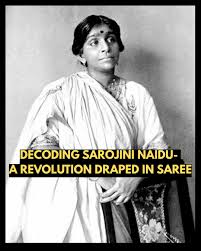The Emergence of Indian Indie Noir
What is Indian Indie Noir Indian Indie Noir is an interesting mix that marries components of traditional noir with traditional Indian culture and society. Because of the atmosphere, the complex characters and the grey moral narratives, this genre brings crime and the human psyche to Indian audiences in a new light. 
The Defining Elements of Indian Indie Noir
1. Smoke: Crafting Atmospheric Depth
Smoke, both literal and metaphorical, plays a pivotal role in establishing the mood of Indian Indie Noir films. It symbolizes obscured truths, hidden motives, and the pervasive uncertainty that envelops the characters. The use of dim lighting, shadowy settings, and visual haze contributes to a sense of disorientation and intrigue, drawing viewers into the film’s enigmatic world.
2. Grit: Portraying Raw Realism
Grit in Indian Indie Noir is manifested through unflinching portrayals of urban decay, socio-economic struggles, and the stark realities of life. These films often delve into the underbelly of cities, exposing the harshness of environments and the resilience of individuals navigating them. The gritty aesthetic underscores the authenticity of the narratives, grounding the stories in a tangible reality.
3. Guilt: Exploring Moral Ambiguity
Guilt serves as a central theme, driving character development and plot progression. Protagonists are frequently depicted grappling with past actions, ethical dilemmas, and the consequences of their choices. This exploration of guilt adds psychological depth to the characters, highlighting the internal conflicts that mirror the external chaos of their surroundings.
Evolution of Indian Indie Noir
The roots of Indian Indie Noir can be traced back to the 1950s, with films like “Baazi” (1951) incorporating noir aesthetics into Indian storytelling. Over the decades, the genre has evolved, embracing contemporary themes and experimental narratives. Modern filmmakers have redefined noir conventions, integrating local contexts and issues to create a distinct cinematic language that resonates with Indian audiences.(MUBI)
Notable Films Exemplifying Indian Indie Noir
- “Aaranya Kaandam” (2010): This Tamil film is lauded for its nonlinear narrative and stylized depiction of the criminal underworld, embodying the essence of Indian Indie Noir.
- “Johnny Gaddaar” (2007): A Hindi neo-noir thriller that intricately weaves suspense and betrayal, showcasing the genre’s capacity for complex storytelling.
- “Ugly” (2013): Directed by Anurag Kashyap, this film delves into the dark facets of human nature, reflecting the psychological intensity characteristic of noir.
The Cultural Significance of Indian Indie Noir
Indian Indie Noir is a reflection of life, and as such is a depiction of the paradoxes, enigmas and idiosyncrasies of the human condition. Touching issues such as corruption, identity and existential gloom, the films foster examinations and discussions about the darker parts of living. Their moral ambiguity tapped into the audiences’ heads questioning whether their understanding of right and wrong were in fact correct within the complex weave of India society.
The Enduring Impact of Indian Indie Noir
Indian Indie Noir just can’t stop telling exciting stories and reinventing the wheel. Combining smoke-filled atmospheres with gritty realism and deep explorations of guilt, it’s something cinema can do unlike anything else – a treat for the brain and the gut. While film-makers continue to redefine storytelling, Indian Indie Noir is proof of cinema’s power to shed light on the dark underbelly of the human predicament.
FAQ: Understanding Indian Indie Noir
Q1: What distinguishes Indian Indie Noir from traditional noir films?
A1: Indian Indie Noir differentiates itself by integrating Indian cultural elements, societal issues, and local settings into the classic noir framework, resulting in a unique blend that reflects the country’s diverse narratives.
Q2: Are there specific themes commonly explored in Indian Indie Noir?
A2: Yes, common themes include moral ambiguity, existential crises, societal corruption, and the psychological complexities of guilt and redemption.
Q3: How has Indian Indie Noir evolved over time?
A3: The genre has transitioned from early adaptations of noir aesthetics to more nuanced and culturally specific narratives, embracing experimental storytelling and contemporary issues relevant to Indian society.
Q4: Can you recommend some Indian Indie Noir films to watch?
A4: Notable films include “Aaranya Kaandam,” “Johnny Gaddaar,” “Ugly,” “Monica, O My Darling,” and “Andhadhun,” each offering a distinct perspective within the genre.(IMDb)
Q5: What impact does Indian Indie Noir have on viewers?
A5: The genre challenges viewers to engage with complex moral questions and reflect on the darker aspects of human nature and society, fostering a deeper understanding of the multifaceted human experience.